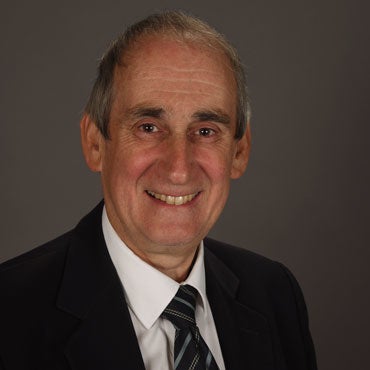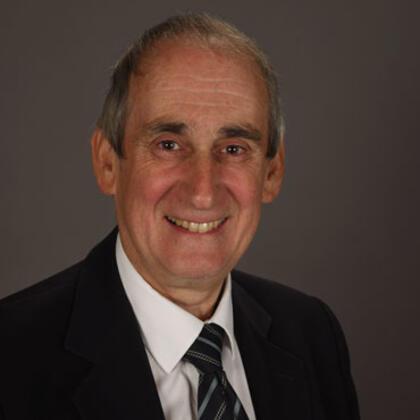Philanthropy has always been a feature of public life from faith and good works in medieval times to charitable giving today. This symposium looks at philanthropy in its historical context, reviews the work of the great philanthropists of the nineteenth century in particular, and asks what it has to offer in the world today.
8 November 2012
Roles in Philanthropy Old and New:
An Introduction
Professor Tim Connell
Welcome to today’s Symposium on the subject of Philanthropy. In the course of the afternoon I hope that we can examine the topic from a variety of angles by calling upon some expert speakers, and then draw some conclusions from the afternoon with a panel discussion.
This is National Trustees’ Week, an opportunity to celebrate those unsung heroes who run the 180,000 charities which are registered with the Charity Commission, not to mention the 80,000 which are not. They may be called directors, trustees, members of the board, governors or simply committee members, and one of the aims of Trustees’ Week is not only to draw attention to the work that they do, but also to attract younger people to take on such roles. A fresh eye and the optimism of youth are as valuable as the years of experience and battle-hardened view of the world which are the hallmark of their elders and betters. There are more than a million positions of this type, and apparently half of all charities have at least one vacancy on their board.[i]
The National Council for Voluntary Organisations offers some useful advice,[ii] which gives some idea of how charitable activities are viewed, and how they ought to be run, Being a charity is not the same as being an organisation that does ‘good things’. Charity has an outward, inclusive nature: it is not inward-looking, for private benefit. Only organisations with aims ('purposes') that are charitable for public benefit are accorded the charity label.
To be a charity is therefore a mixture of what you are, what you do and how you do it, and the Charity Commision (which has become increasingly militant in recent years) provides an interesting set of what it calls “hallmarks”. [iii]
Hallmark 1: Clear about its purposes and direction
An effective charity is clear about its purposes, mission and values and uses them to direct all aspects of its work.
Hallmark 2: A strong board
An effective charity is run by a clearly identifiable board or trustee body that has the right balance of skills and experience, acts in the best interests of the charity and its beneficiaries, understands its responsibilities and has systems in place to exercise them properly.
Hallmark 3: Fit for purpose
The structure, policies and procedures of an effective charity enable it to achieve its purposes and mission and deliver its services efficiently.
Hallmark 4: Learning and improving
An effective charity is always seeking to improve its performance and efficiency, and to learn new and better ways of delivering its purposes. A charity's assessment of its performance, and of the impact and outcomes of its work, will feed into its planning processes and will influence its future direction.
Hallmark 5: Financially sound and prudent
An effective charity has the financial and other resources needed to deliver its purposes and mission, and controls and uses them so as to achieve its potential.[iv]
There is no shortage of fields which attract attention from philanthropists. Health, of course, is one, animal charities are another. But a major area for concern given rising costs and the overall impact on the economy, is education. Universities have become adept at running highly professional money-raising campaigns and that in turn has seen the emergence of philanthropy as a university subject. The University of Indiana has set up the first School of Philanthropy, which includes courses in the US, the UK and a developing country. Closer to home, Cass Business School offers programmes in Philanthropy, Grant Making and Social Investment at PG Cert, PG Dip and Master’s levels as part of the first Centre for Charitable Giving and Philanthropy in the UK, which draws together expertise from five universities, including Kent.[v]
Nonetheless, it is generally recognised that universities in particular are unlikely to survive in their present form without massive injections of capital from other sources, although it should be remembered that some academic institutions have burnt their fingers with donations from sources that turned out to be questionable or regrettable. One HE institution was only weeks away from a BCCI Chair in Banking Ethics, whilst the Gaddafi connection notoriously caused embarrassment to the London School of Economics.
However, appeals can be well, very appealing. The Cambridge 800th Anniversary Fundraising Campaign began in 2001 and by July last year had raised £650 million for the University and a mammoth £550 million for the colleges, a total of £1.2 billion. This has been eclipsed, as is right and proper, by the Dark Blues, who set out in 2008 to raise an equivalent sum, and stormed past this figure in March 2012 – whereupon the Vice-Chancellor raised his sights to £3 billion as the next target. Such figures are quite feasible when individuals are prepared to put in sums which to most of us would appear to be fantastical: Michael Moritz and his wife Harriet Heyman, have pledged £75 million to Oxford in recognition of the fact that her mother arrived in London in 1937 as a refugee on the Kindertransport from Germany.[vi] This is the largest single gift for student bursaries in European history and will eventually allow five hundred undergraduates a year to study at Oxford on reduced fees and with living expenses paid.
Unsurprisingly, these funds originated in the USA, which has long been a home to philanthropists, many of whom have taken an interest either in the old country, or projects way beyond national borders. We shall doubtless be hearing names today such as George Peabody, Henry Wellcome and Andrew Carnegie, amongst many others (and Carnegie would be horrified today to see what is happening to so many of the libraries that he helped set up).
This rather puts me in mind of the American benefactor who came to a service of thanksgiving in the City after the War, and who stormed out after the sermon saying, “You heard that guy? He said, Lord, we thank you for this succour from America....”
Of course, there are quite original ways in which we can help ourselves in the UK. In May 2012 David Cameron launched Big Society Capital, a £600m fund as a boost to the social investment market, with the aim of using capital to generate social as well as financial returns. Sir Richard Lambert is the first chair of BSC, and was appointed in 2011.[vii]
Cameron’s Big Society project never went down very well, but the idea actually goes back to the previous government in 2000 when the Social Investment Task Force was set up which led to the idea of drawing on the funds left in dormant bank accounts and to put them to good use, which came into law in 2010.[viii]
It is perhaps vulgar to talk about money, but as we can see from some of the previous examples, funding is pivotal and increasingly so as government funding dries up and the calls for financial support increase from a wide range of worthwhile causes.[ix] Perhaps we should also look at who the people are who give, and why they wish to contribute in the way that they do. Before his death in 1919, Carnegie had donated over $350 million for various causes – an enormous sum at the time.[x] The "Andrew Carnegie Dictum" illustrates Carnegie's generous nature:
To spend the first third of one's life getting all the education one can.
To spend the next third making all the money one can.
To spend the last third giving it all away for worthwhile causes.
Certainly, there is an element of wanting to pay back, wanting to put something in place to help others, and maybe a realisation that someone eventually has to do it. It has, of course, become quite an industry. Only in February of this year, I received no fewer than four letters in one week, all asking me to remember some well-known and highly deserving charitable body in my will – which had me scuttling off to the doctor, in case they knew something that I didn’t... This highlights an interesting point, however, that many individuals contributing even quite small sums together, can have a cumulative effect. The general wisdom is that 80% of funding comes from 20% of donors, and some think the ratio is even higher. But it is interesting to note that in the recent campaign for Cambridge, no fewer than 25% of alumni gave something, and the total represented 34% of the money raised.[xi]
It could be argued that this is a clearly identifiable and above average community to draw on, but the public response to major catastrophes ranging from the Managua Earthquake on Christmas Day 1972 to the 2004 Indian Ocean Tsunami,[xii] shows that charitable giving is quite high in people’s minds, and that charitable work has a status of its own in our society with celebrities and Royalty each making their own particular contribution. Whether charity is the same thing as philanthropy, let alone munificence, beneficence, open-handedness or even the milk of human kindness, remains to be seen.
Today we shall be looking at the ways in which philanthropy has changed down the ages; how it can function in what may be deemed turbulent times; and finally we shall call upon a panel of experts to lead the discussion, from which I hope we can draw some useful conclusions.
© Professor Tim Connell 2012
[i]From the Charity Commission website http://www.charity-commission.gov.uk/
[ii]http://www.ncvo-vol.org.uk/governanceandleadership. See also Philanthropy UK, which offers a lot of interesting information at http://www.philanthropyuk.org/
[iii]The hallmarks they offer do read a bit like the old Scout Law – a Scout smiles and whistles under all difficulties.
[iv]From the Charity Commission website http://www.charity-commission.gov.uk/
[v]http://www.cass.city.ac.uk/research-and-faculty/centres/cgap The other members of the consortium are Edinburgh, Southampton and Strathclyde.
[vi]See http://www.ox.ac.uk/admissions/undergraduate_courses/student_funding/moritzheyman.html and the article in Oxford Today Michaelmas 2012.
[vii]Incidentally Sir Richard Lambert will be giving the Gresham Special Lecture on Thursday June 6th 2013, at 6pm in the Guildhall.
[viii]About £400m became available. http://www.bigsocietycapital.com/
[ix]The Stationers’ Company Foundation for example, covers Saturday Schools, competitions for near professional quality school magazines, student bursaries linked to the trades of the Company, and help for wounded soldiers. See http://www.stationers.org/the-stationers-foundation.html
[x]Wikipedia: http://en.wikipedia.org/wiki/Andrew_Carnegie
[xi]In The Philanthropist, Cambridge University Development Office, 2012.
[xii]See http://news.nationalgeographic.co.uk/news/2004/12/1227_041226_tsunami.html. Worldwide contributions in support of the victims reached £14 billion. See http://en.wikipedia.org/wiki/2004_Indian_Ocean_earthquake_and_tsunami


 Login
Login







